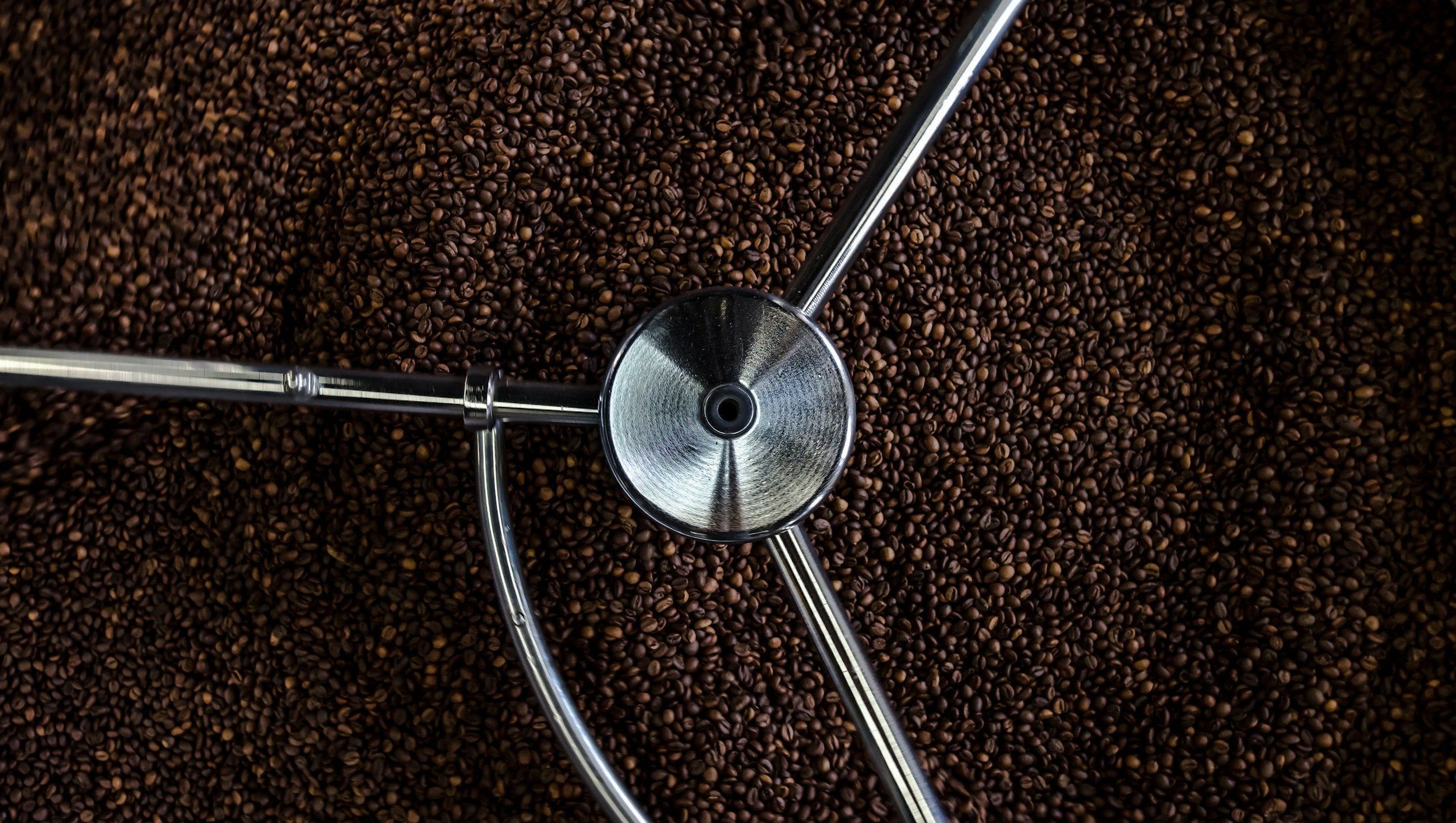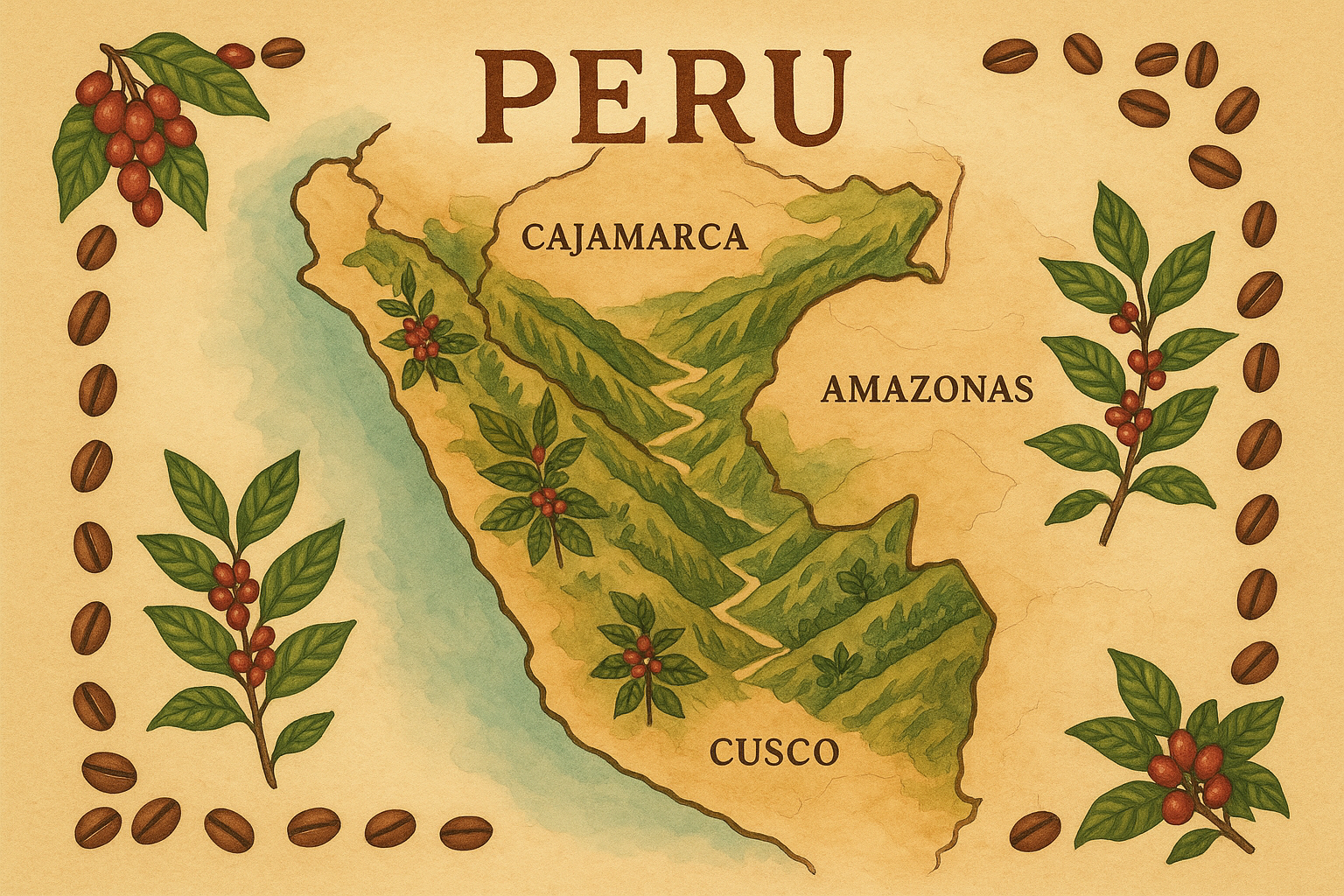
Is Peruvian Coffee Low Acid? The Truth About Acidity
For many coffee drinkers, acidity is one of the most misunderstood aspects of the brew. Some think it refers to sourness or bitterness. Others worry about how it affects their stomach or digestion. One of the most common questions we hear is this: is Peruvian coffee low acid?
The short answer is yes, often it is. But the more complete answer is a bit more nuanced. Peruvian coffee tends to be smoother and more balanced than coffees from other regions. This gives the impression of lower acidity, especially when compared to bright African coffees or ultra-dark roasted blends. However, not all acidity is created equal, and not all low-acid coffees taste the same.
In this blog, we’ll unpack what acidity really means in coffee, how it relates to flavor and digestion, and why Peruvian coffee often ends up being a great choice for people looking for a gentle, well-balanced cup.
What Does Acidity Mean in Coffee
In coffee tasting, acidity does not mean sourness. It refers to a bright, lively sensation that gives the cup a sense of lift and complexity. Think of the way a squeeze of lemon wakes up a dish, or the crispness of a green apple. That’s the kind of acidity we talk about in coffee.
Some acidity is desirable. It adds depth, sparkle and a refreshing finish. Coffees without it can taste flat or dull. However, too much acidity, especially when paired with poor roasting or bad brewing, can feel sharp or unpleasant.
There’s also another kind of acidity people worry about: how coffee affects the stomach. This is usually a concern for those with acid sensitivity, heartburn or digestive issues. In this case, low-acid coffee may be easier to tolerate.
Is Peruvian Coffee Naturally Low in Acid
Peruvian coffee is often described as smooth, mild and easy to drink. It usually has moderate acidity that shows up as soft citrus or gentle fruit notes. It rarely feels sharp or sour.
There are a few reasons for this:
-
High Elevation Growing Conditions
Peru grows much of its coffee at high elevations — sometimes over 1,800 meters. The cooler climate slows down cherry development, allowing sugars and organic acids to build gradually. The result is a more balanced cup. -
Washed Processing Method
Most Peruvian coffees are washed or wet-processed. This removes the fruit from the seed before drying, leading to clean, crisp flavors. It enhances clarity while keeping acidity gentle. -
Varietals and Soil
Many Peruvian farms grow classic Arabica varietals like Typica, Caturra and Bourbon. These tend to have mild flavor profiles and moderate acidity. The volcanic and mineral-rich soil in Peru also contributes to clean, smooth notes.
So while Peruvian coffee does have some acidity, it’s usually the kind that adds sweetness and brightness without overwhelming the palate.
Does Roast Level Affect Acidity
Yes, very much. The longer and darker the roast, the more acidity is reduced. Light roasts tend to highlight acidity, while medium roasts round it out and dark roasts mute it significantly.
At First Light Roasters, we roast our Peruvian coffee to a light-medium level. This lets us preserve the coffee’s natural sweetness and brightness while keeping it smooth and easy to drink. It’s an ideal balance for people who want flavor without sharpness.
If you’re especially sensitive to acidity, a medium or medium-dark roast may be better. But keep in mind, extremely dark roasts can introduce bitterness or smoke that may be just as unpleasant as high acidity.
How Does Brewing Method Affect Acidity
How you brew your coffee also changes how much acidity ends up in the cup. Here are a few examples:
-
Pour Over: Highlights acidity and clarity. Use if you want a bright, clean cup.
-
French Press: Mutes acidity and adds body. Good for smooth, mellow results.
-
Cold Brew: Low in acidity due to cold extraction. Great for sensitive stomachs.
-
Espresso: Intensifies flavors, including acidity. Requires careful dialing in.
-
Drip Machine: Balanced, depending on grind and water temperature.
If your goal is to minimize perceived acidity, cold brew or French press are often the best options. Use filtered water and avoid overheating the water, as very hot brews can extract sharp flavors.
Is Peruvian Coffee Good for Sensitive Stomachs
In many cases, yes. Because it’s naturally smooth and not overly acidic, Peruvian coffee is often easier on the stomach than more vibrant or oily beans. When paired with a proper roast and brew method, it becomes even more gentle.
To make it more stomach-friendly:
-
Use a medium roast or cold brew
-
Drink it black or with oat milk (low in acidity)
-
Avoid over-extracting (don’t let it sit too long while brewing)
-
Rinse your filter or French press to remove residual oils
Note that everyone’s body is different. If you’re extremely sensitive, start with small amounts and test how you feel.
Can Low-Acid Coffee Still Have Flavor
Absolutely. A common myth is that low-acid coffee is bland or dull. That might be true for over-roasted or low-quality beans. But good Peruvian coffee has tons of flavor — it just expresses it differently.
Instead of sharp fruit or biting citrus, you get mellow sweetness, soft chocolate notes and a silky texture. You may taste roasted nuts, dried fruit or hints of florals. The balance is what makes it shine.
If you enjoy subtlety, smooth finishes and gentle transitions between flavors, Peruvian coffee will feel like a treat, not a compromise.
What Should You Look For on the Label
When choosing a Peruvian coffee for lower acidity, look for:
-
Medium roast or medium-dark roast
-
Descriptors like smooth, mellow, chocolate, nutty
-
Washed process or “fully washed”
-
High-altitude growing regions like Cajamarca or Cusco
-
Whole bean for freshness
-
Fresh roast date (use within 30 days of roast)
At First Light Roasters, we label our Peruvian roast clearly and roast weekly to order. You always get a fresh, balanced coffee that’s easy to enjoy every day.
Final Thoughts
Peruvian coffee offers a rare combination of flavor and comfort. It’s clean and bright enough to excite your taste buds, yet mellow enough to be gentle on your stomach. Whether you’re a seasoned coffee drinker or just starting to explore specialty beans, Peru is an excellent origin to begin with.
Is it low acid? In many ways, yes. It’s certainly lower than citrus-forward African coffees or dark, oily supermarket blends. But more importantly, its acidity is balanced, pleasant and never harsh.
If you’re seeking a coffee that’s flavorful but not overpowering, sweet without being sugary and smooth without being dull, try Peruvian. Brew it with care, and you’ll see why so many people make it their daily go-to.




Leave a comment
This site is protected by hCaptcha and the hCaptcha Privacy Policy and Terms of Service apply.